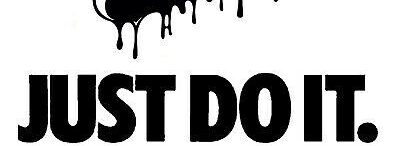Types of Rhinoplasty You Need to Know About Before Your Appointment

What is Rhinoplasty?
Rhinoplasty in Dubai is a surgical procedure done to rectify nasal issues and concerns individuals are going through. However to know more about Types of Rhinoplasty You Need to Know About Before Your Appointment keep reading the complete post and avail of the treatment.
Nasal Deformities Correctable By Rhinoplasty
Using modern techniques, a well-performed Rhinoplasty can:
- Alter the size and shape of the nose.
- Change the appearance and the width of the tip.
- Correct nasal septum deviations.
Rhinoplasty in Teenagers
Teenagers should wait to have rhinoplasty surgery until their noses have fully grown into adulthood. Around the age of 15, the nose fully develops in girls, and around the age of 17, in boys.
Moreover, the nose might not develop normally if the nasal septum is operated on.
Aside from physical factors, it’s vital to keep in mind that teenagers might not be mature enough to make crucial decisions about aesthetic surgery. For this reason, parents should be involved in the process.
Types of Rhinoplasty:
As per the experts at Enfield Royal Clinic, the two basic types of Rhinoplasty Surgery are:
- Open Rhinoplasty: The surgeon uses the Open Technique, which involves making a little incision between the top lip and the nostrils at the base of the columella. Together with tiny cuts inside the nose rim, this incision is continuous. This makes it possible to elevate and completely separate the skin from the nasal cartilages underneath, which give the nose its structure.
The majority of rhinoplasty specialists employ the Open Technique because it provides the surgeon with a clear view of the nasal anatomy and enables more precise reconstruction of the nose, including size and tip location. It also provides significant benefits for preserving nasal function. - Closed Rhinoplasty: To lift the skin off the underlying nasal bone and cartilage, the surgeon makes incisions inside the nose during a closed Rhinoplasty in Dubai. This makes it possible to cut and lift the septum’s lining. The skin can then be redraped to take on the new contour once the septum and cartilages have been modified.
In addition, when there are few suggested structural alterations and no function would be threatened, the Closed Technique might be chosen. Closed rhinoplasties may not be the best method in certain situations because of the difficulty of modifying the position and form of the tip cartilages due to their limited surgical access.
Note: Cartilage Grafts may need to be added to either technique if the patient does not have sufficient cartilage in the nasal septum to reshape the nose and reinforce the new nasal structure.
Before Your Appointment:
Prior to the method, the individuals are required to follow the below instructions to go through a safe procedure.
- Do not take blood thinners.
- Avoid drinking alcohol.
- Prevent smoking.
- Do not go under the sun.
- Wear comfortable clothes.
- Keep your skin clean.
- Keep your skin moisturized.
- Discuss your goals and concerns with the expert surgeon.
- Discuss medical history.
- Have a comfortable recovery space.
- Stay hydrated by drinking water.
Pros & Cons of Rhinoplasty
The Pros:
- The only way to permanently correct a nasal deformity.
- Surgery can correct all nasal deformities whereas fillers cannot.
- A Rhinoplasty can be customised to exactly what your nose needs and how you want it to look.
- Any nasal airway obstruction can be corrected at the same time.
- If indicated, reshaping of the chin can be performed at the same time for an improved facial profile.
The Cons:
- Rhinoplasty is not minor surgery, most cases take at least 2 hours to do.
You will need at least 2 weeks to recover before resuming work and social activities. - Exercising and non-contact sports should be avoided in the first 2-3 weeks.
- No contact sports or activities that could involve a risk of direct injury to the nose, or the nose getting sunburnt, in the first 8 weeks.
Potential Risks & Complications of Rhinoplasty
Surgery and anaesthesia nowadays are considered generally safe, but both have potential risks and complications which include:
Specific to Rhinoplasty
- Numbness of the nose or change in feeling that continues after the swelling has gone down.
- Asymmetry of the nose.
- Rarely, reduced sense of smell or loss of smell.
- Persistent visible swelling.
- Loss of structural support causing the nasal airway to collapse during breathing and needing further surgery.
- Perforation of the nasal septum.
- Nasal airway obstruction because of over-altering the cartilage when decreasing the size of the nasal passages.
- Extrusion of an implant through the skin.
- Reddening of the nasal skin requiring vascular laser treatments.
- Persistent pain during recovery requiring prescription pain-relievers.
- Repeat surgery: around 10% of patients require a 2nd procedure to further improve their result.
General Surgical Risks
- Wound infection.
- Pain and discomfort around the incisions and operative site.
- Hematoma (an accumulation of blood around the surgical site) that could require drainage.
- Heavy bleeding from the incisions.
- Pigmented, raised, or keloid scars require additional treatments.
- Slow or poor healing – more of a risk in smokers and diabetics.
- Separation of the wound edges.



